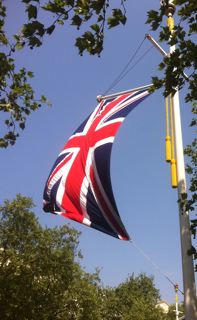
Electronic Invoicing
31 May Electronic Invoicing – relaxation of the rules doesn’t mean “anything goes”
The relaxation in the regulations on electronic invoicing in Europe will allow more organizations to take advantage of the lower business costs and greater control and efficiency that they allow but – as Ernst and Young point out in an insightful piece recently – a relaxation in the rules doesn’t mean than “anything goes”. Indeed, care needs to be taken to ensure that e-invoicing systems, whether managed in-house or out sourced, need to be thoroughly audited to ensure that they comply with the regulations.22 May Accounts payable – shocking waste revealed by new research
Posted at 16:49h
in Dynamic Discounting, e-invoicing, Electronic Invoicing, Financial Supply Chain Management, Intelligent Data Capture
 We all know that manual processes are inefficient. We all know that the use of paper based business processes is increasingly becoming an anachronism in the 21st century and we all know that AP automation is a good idea. But have you ever stopped to consider how much money is being wasted by not taking action?
We all know that manual processes are inefficient. We all know that the use of paper based business processes is increasingly becoming an anachronism in the 21st century and we all know that AP automation is a good idea. But have you ever stopped to consider how much money is being wasted by not taking action?
07 May The biggest single reason for not implementing electronic invoicing
When is an e-invoice not an e-invoice? 10 years ago it was simple. It was clear that a "true" or "pure" electronic invoice was a structured computer-to-computer message. The supplier's computer would send an invoice message in a format that the customer's computer could read. An email with a Word document or an excel file attached was not an electronic invoice and worse, a pdf image of a paper invoice was nowhere near an e-invoice. These were superficial attempts to tick the e-invoicing box. They weren't true electronic invoices. But in recent years the line between what is and what is not an e-invoice has become blurred and the "purity" of the "true" electronic invoice is becoming it's own worst enemy.02 May Not everything that counts can be counted
Electronic invoicing can save millions. Manual process are inefficient. Errors create unnecessary work. In the 21st century, passing pieces of paper between organizations as a record of a routine business transaction is a modern day anachronism. It's bizarre and a little embarrassing. So why is your organization doing it?29 Apr Royal Wedding Fever – catch it if you can
The world of commerce is all about the numbers. Top line, bottom line, FTEs, KPIs and ROI but, to borrow and paraphrase the words of the great Albert Einstein - not everything that counts can be counted. In London today - the streets are filled with people from all over the world - from the United States, from Germany, Australia and New Zealand, Canada and Brazil as well as all corners of the British Isles - all coming together to celebrate the wedding of a young couple. It's an unparalleled media event - The Mall is swarming with news readers, surrounded by revelers, somehow maintaining a degree of dignity as they report to the folks back home the party atmosphere. Good Morning America broadcast live from London.
The feel good factor is palpable. Even a miserable old git like me that hand on heart believes the monarchy to be an anachronism that's unlikely to survive long enough to see Charles on the throne never mind William, is prepared to put his cynicism to one side to celebrate a great day. We may be in the middle of a recession but even that can't dampen the enthusiasm of the crowds.
And after the excitement settles down it will be back to the numbers. The impact on the British economy of having four public holidays in two weeks. The money spent on security and the cost of clearing up.
In London today - the streets are filled with people from all over the world - from the United States, from Germany, Australia and New Zealand, Canada and Brazil as well as all corners of the British Isles - all coming together to celebrate the wedding of a young couple. It's an unparalleled media event - The Mall is swarming with news readers, surrounded by revelers, somehow maintaining a degree of dignity as they report to the folks back home the party atmosphere. Good Morning America broadcast live from London.
The feel good factor is palpable. Even a miserable old git like me that hand on heart believes the monarchy to be an anachronism that's unlikely to survive long enough to see Charles on the throne never mind William, is prepared to put his cynicism to one side to celebrate a great day. We may be in the middle of a recession but even that can't dampen the enthusiasm of the crowds.
And after the excitement settles down it will be back to the numbers. The impact on the British economy of having four public holidays in two weeks. The money spent on security and the cost of clearing up.
